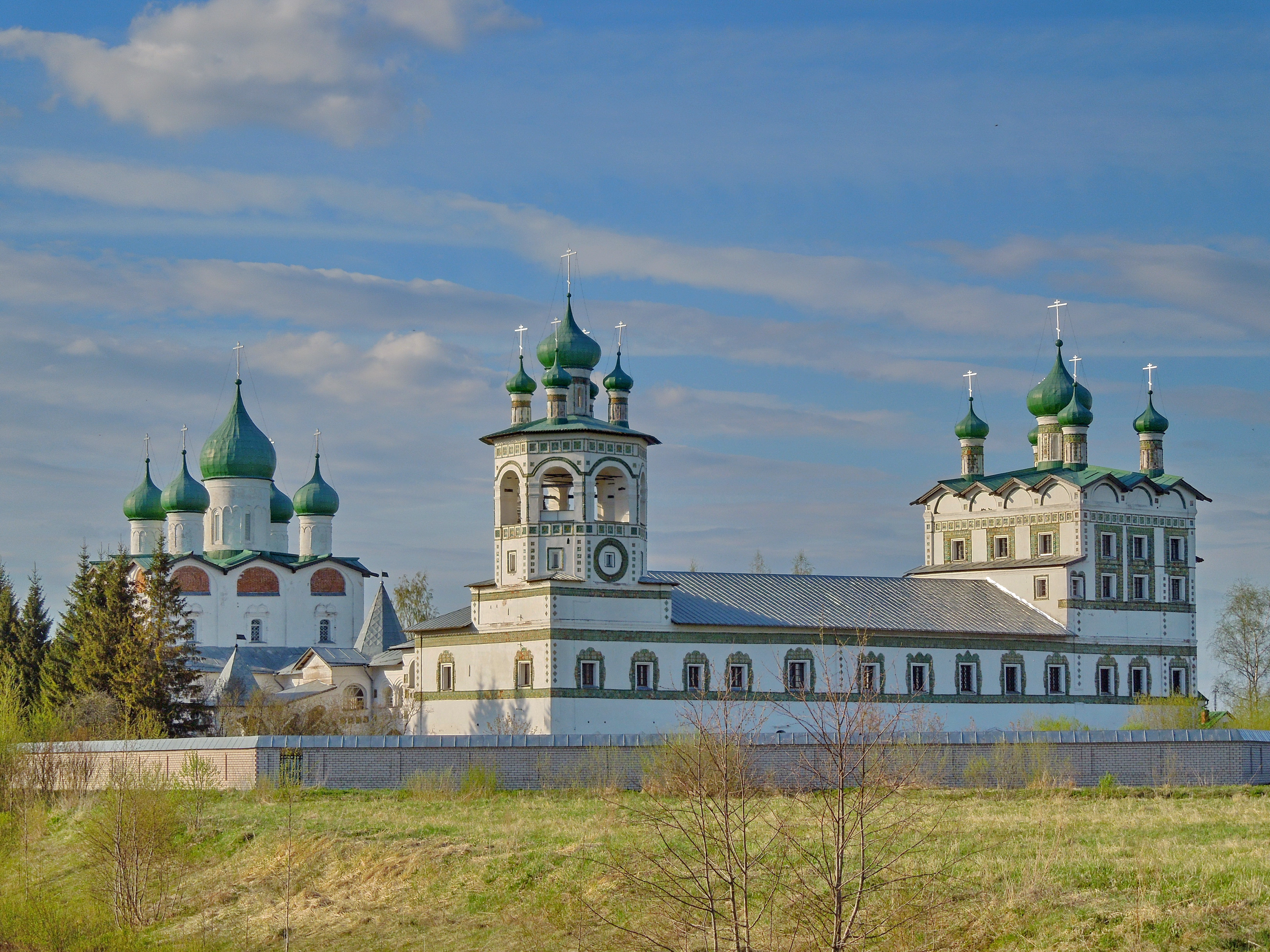Vyazhishchsky Monastery on:
[Wikipedia]
[Google]
[Amazon]
 The Vyazhishchi Convent of St. Nicholas (''Nikolo-Vyazhishchsky Stavropegial Women's Monastery''; russian: Николо-Вяжищский ставропигиальный монастырь) is an Orthodox convent located in the village of Vyazhishchi, 7 miles (12 km) NNW of
The Vyazhishchi Convent of St. Nicholas (''Nikolo-Vyazhishchsky Stavropegial Women's Monastery''; russian: Николо-Вяжищский ставропигиальный монастырь) is an Orthodox convent located in the village of Vyazhishchi, 7 miles (12 km) NNW of Russian Orthodox monasteries in Russia
Buildings and structures in Novgorod Oblast
Cultural heritage monuments of federal significance in Novgorod Oblast
 The Vyazhishchi Convent of St. Nicholas (''Nikolo-Vyazhishchsky Stavropegial Women's Monastery''; russian: Николо-Вяжищский ставропигиальный монастырь) is an Orthodox convent located in the village of Vyazhishchi, 7 miles (12 km) NNW of
The Vyazhishchi Convent of St. Nicholas (''Nikolo-Vyazhishchsky Stavropegial Women's Monastery''; russian: Николо-Вяжищский ставропигиальный монастырь) is an Orthodox convent located in the village of Vyazhishchi, 7 miles (12 km) NNW of Veliky Novgorod
Veliky Novgorod ( rus, links=no, Великий Новгород, t=Great Newtown, p=vʲɪˈlʲikʲɪj ˈnovɡərət), also known as just Novgorod (), is the largest city and administrative centre of Novgorod Oblast, Russia. It is one of the ol ...
. Its surviving buildings date from the period between 1681 and 1708. They are famous for having the richest maiolica
Maiolica is tin-glazed pottery decorated in colours on a white background. Italian maiolica dating from the Renaissance period is the most renowned. When depicting historical and mythical scenes, these works were known as ''istoriato'' wares ( ...
decorations in Northwest Russia
Northwest Russia, or the Russian North is the northern part of western Russia. It is bounded by Norway, Finland, the Arctic Ocean, the Ural Mountains and the east-flowing part of the Volga. The area is roughly coterminous with the Northwestern Fe ...
.
The monastery was founded by the monks Efrosiny, Ignaty, and Galaktion and the hieromonk
A hieromonk ( el, Ἱερομόναχος, Ieromonachos; ka, მღვდელმონაზონი, tr; Slavonic: ''Ieromonakh'', ro, Ieromonah), also called a priestmonk, is a monk who is also a priest in the Eastern Orthodox Church and E ...
Pimen at the end of the fourteenth century (a charter from 1391 mentions it), with Pimen becoming the first hegumen of the monastery. It was first mentioned in the chronicle in the year 1411. The monastery was patronized by Archbishop Evfimy II (r. 1429-1458), who was hegumen of the monastery before his election as archbishop of Novgorod
The Diocese of Novgorod (russian: Новгородская епархия) is one of the oldest offices in the Russian Orthodox Church. The medieval archbishops of Novgorod were among the most important figures in medieval Russian history and cul ...
in 1429, and was buried there (he is known as St. Evfimy of Vyazhishche).Novgorodskaia Vtoraia Letopis (PSRL 3), 241. His sarcophagus is now in the Church of St. Evfimy of Vyazhishche, built in 1685.
The monastery was one of the greatest landowners in the Novgorodian land, holding in the 15th and 16th centuries some 2,000 hectares of land. Much of its lands were confiscated during Catherine II
, en, Catherine Alexeievna Romanova, link=yes
, house =
, father = Christian August, Prince of Anhalt-Zerbst
, mother = Joanna Elisabeth of Holstein-Gottorp
, birth_date =
, birth_name = Princess Sophie of Anha ...
's secularisation reform (1764) at which time it was classified as a 2nd Class Monastery.
Following confiscation by the Soviets, the monastery was closed in 1920. It became part of a collective farm and the buildings were used to store potatoes, as well as a threshing floor, a forge, and a metal shop. From the 1950s, there were efforts to restore the monastery and it was returned to the Russian Orthodox Church in 1989. On March 31, 1990, then Metropolitan of Leningrad and Novgorod Alexius
Alexius is the Latinized form of the given name Alexios ( el, Αλέξιος, polytonic , "defender", cf. Alexander), especially common in the later Byzantine Empire. The female form is Alexia ( el, Αλεξία) and its variants such as Alessia ...
(later the Patriarch of Moscow) reconsecrated the main church to St. Evfimy.
The convent has the status of a stauropegic
A stauropegion, also spelled stavropegion (from el, σταυροπήγιον from σταυρός ''stauros'' "cross" and πήγνυμι ''pegnumi'' "to affirm"), is a monastery or a parish which depends directly on the primate or on the Holy Syn ...
monastery (as of a grant from the Holy Synod
In several of the autocephalous Eastern Orthodox churches and Eastern Catholic Churches, the patriarch or head bishop is elected by a group of bishops called the Holy Synod. For instance, the Holy Synod is a ruling body of the Georgian Orthodox C ...
of 7 October 1995), that is, it is under the direct control of the Patriarch of Moscow rather than of the Archbishop of Novgorod. At the turn of the 21st century, 15 nuns lived at the monastery. It has two churches with altars dedicated to St. Evfimy, St. Nicholas, St. John the Divine, and to the feast of the Ascension. The churches were meticulously restored in the early 21st century under the supervision of Leonid Krasnorechyev
Leonid (russian: Леонид ; uk, Леонід ; be, Леанід, Ljeaníd ) is a Slavic version of the given name Leonidas. The French version is Leonide.
People with the name include:
*Leonid Andreyev (1871–1919), Russian playwright an ...
and Ninel Kuzmina
Ninel is a given name. It is feminine in the former Soviet Union and masculine in Romania. In many Soviet cases, it is often considered to be derived from reversing the surname Lenin. It may refer to:
*Ninel Aladova (born 1934), Belarusian archite ...
.